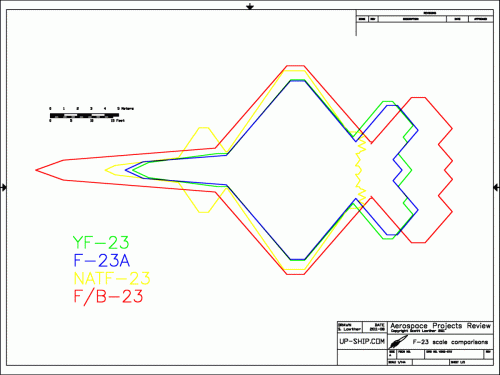As for "F-24", we know it was quoted in a pilot's log book, so the designation is definitely in use already for some secret aircraft. "B-3" seems to have been reserved (albeit informally) for the replacement of the B-2. "A-14" comes next after "A-12", true, but A-18 is already in use, so I don't think DoD would bother filling the blanks...
I guess if the primary class is "fighter" and the secondary mission is either "attack" or "bomber", it SHOULD be AF-23 or BF-23... and since it would be a new variant, it could be AF-23B and BF-23B... Except I think the "FB-23" is sufficiently different (notably larger) to justify a new number (BF-36A?) or even a complete change of designation (A-19A?, B-4A?).
I for one believe that the easiest path would be to use the attack and fighter class lists in conjunction, keeping the same numbers for the same aircraft and just switching from F- to A- depending on the main mission. It was done before for F-18 and A-18 (I believe that originally A/F-18 was supposed to reflect that duality, not be a proper designation). According to this logic, the Tomcat, Eagle, Fighting Falcon, Hornet, Raptor, Black Widow and Lightning II designs could have "A-" designations reserved in case "attack" becomes their primary mission: A-14, A-15, A-16, A-18, A-22, A-23, A-35. What do the rest of you guys think? Am I the only one to think it could be a good idea?

